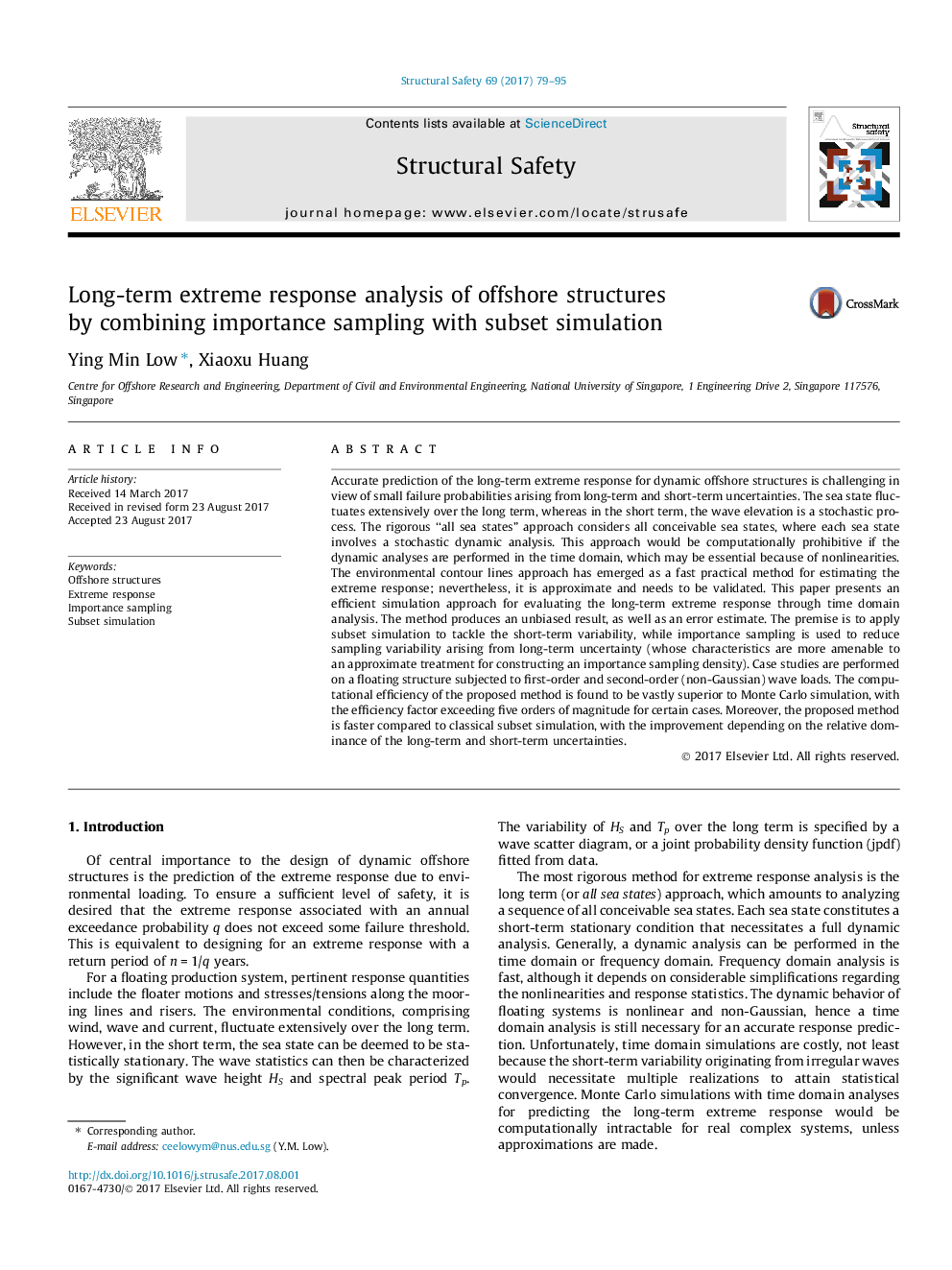| Article ID | Journal | Published Year | Pages | File Type |
|---|---|---|---|---|
| 4927795 | Structural Safety | 2017 | 17 Pages |
Abstract
Accurate prediction of the long-term extreme response for dynamic offshore structures is challenging in view of small failure probabilities arising from long-term and short-term uncertainties. The sea state fluctuates extensively over the long term, whereas in the short term, the wave elevation is a stochastic process. The rigorous “all sea states” approach considers all conceivable sea states, where each sea state involves a stochastic dynamic analysis. This approach would be computationally prohibitive if the dynamic analyses are performed in the time domain, which may be essential because of nonlinearities. The environmental contour lines approach has emerged as a fast practical method for estimating the extreme response; nevertheless, it is approximate and needs to be validated. This paper presents an efficient simulation approach for evaluating the long-term extreme response through time domain analysis. The method produces an unbiased result, as well as an error estimate. The premise is to apply subset simulation to tackle the short-term variability, while importance sampling is used to reduce sampling variability arising from long-term uncertainty (whose characteristics are more amenable to an approximate treatment for constructing an importance sampling density). Case studies are performed on a floating structure subjected to first-order and second-order (non-Gaussian) wave loads. The computational efficiency of the proposed method is found to be vastly superior to Monte Carlo simulation, with the efficiency factor exceeding five orders of magnitude for certain cases. Moreover, the proposed method is faster compared to classical subset simulation, with the improvement depending on the relative dominance of the long-term and short-term uncertainties.
Related Topics
Physical Sciences and Engineering
Engineering
Civil and Structural Engineering
Authors
Ying Min Low, Xiaoxu Huang,
